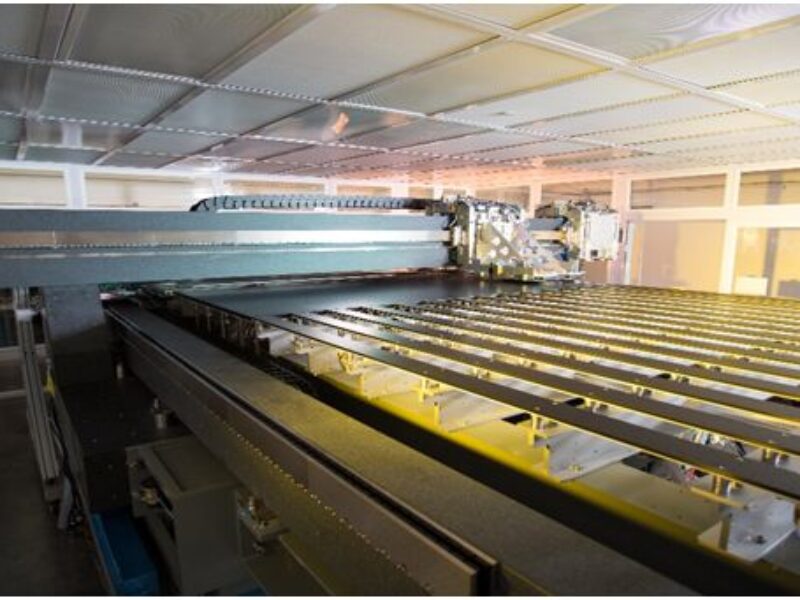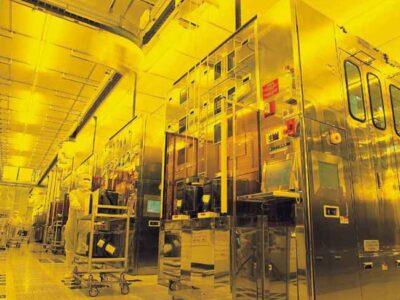
System provides high-volume solution for flexible OLED displays
Kateeva President and Co-founder Dr. Conor Madigan called the YIELDjet FLEX the first real gateway tool for flexible products noting that: "Flexible OLED panels will give shape to amazing consumer experiences. For example, pocket-sized tri-fold smart phones that unfurl to triple the screen size for immersive viewing; curved and flexible smart watches that are richly functional and comfortable to wear; and vehicles featuring paper-thin, surface-conforming displays that enhance aesthetics and improve usability. We’re excited to give display manufacturers new horsepower to cost-effectively mass produce flexible OLED panels that make such imaginative products possible."
The YIELDjet FLEX tool was developed to enable Thin Film Encapsulation (TFE), which is the process that gives thinness and flexibility to the OLED device. The tool is the first product to emerge from Kateeva’s YIELDjet platform, a breakthrough precision deposition technology platform that uses innovative inkjet printing to cost- effectively deposit coatings on complex applications in volume-manufacturing environments.
Until now, though, encapsulation has been a major challenge for the commercialization of flexible OLED displays. Guillaume Chansin Technology Analyst of IDTechEx, commented: "The launch of an inkjet deposition tool is a significant milestone for the display industry. Recent announcements by the leading OLED manufacturers show there is strong momentum in mass production of displays that are thinner, lighter, and bendable. IDTechEx forecasts the market for plastic or flexible OLED displays will grow to $16 billion by 2020."
Precision deposition with inkjet printing flexible OLED is a natural application for the first YIELDjet product. Inkjet enables superb particle performance, high efficiency and scalability which are all key OLED mass-production imperatives. Kateeva believes the company has solved the technical problems that previously prevented inkjet printing from scaling. And until the YIELDjet FLEX, no inkjet printer was qualified for TFE mass production in a customer’s pilot line.
TFE is a complex process. At the center is a multi-layer stack of thin-film materials that are highly sensitive to oxygen and water. Particles on any layer cause defects throughout the device, and even the slightest uniformity aberration will distort the display image. The current production approach is vacuum evaporation which is a well-established technology that uses shadow masks to deposit the layers in a stencil-like process. However, it is slow, inefficient, difficult to scale, and prone to yield-killing particles.
Inkjet technology is beign claimed as the breakthrough replacement for TFE. Inkjet can deposit thick films at very high speed, with superb precision and few defects. Shadow masks are eliminated, which reduces particles. High-yield stacks can be achieved with fewer films than evaporation, and, most importantly, inkjet is scalable to G8, which gives display manufacturers an extendible production solution as the industry shifts to larger substrate sizes.
The YIELDjet FLEX tool features these innovations that equip the tool for TFE mass-production lines:
Optimum Process Environment: The YIELDjet FLEX is enclosed in a pure-nitrogen chamber. Nitrogen is the ultimate OLED processing environment. The chamber shields OLED materials from moisture and air, known degraders of quality, and enables consistently superior device lifetime. Kateeva is not the first to make OLED devices in nitrogen, but it is the first to master the technology and make it production worthy. This is achieved by improving serviceability. A smaller process enclosure speeds post-maintenance recovery and replacement of print heads without exposing the enclosure to air. With this innovation, downtime drops from as much as 24 hours to less than two.
Superior Particle Control: Advanced mechanical design features sharply reduce particle generation, eliminate turbulence, and quickly capture any particles generated. Particles are reduced by more than 10X when compared to conventional OLED production techniques.
Inherent Planarization: Unlike vacuum technologies, the YIELDjet FLEX coatings provide exceptional planarization of substrate surface structures and particles. Proper ink formulation is essential, which is a particular area of Kateeva expertise. When optimized, the ink loads the surface like water filling a bathtub, flowing in and around surface features and for sufficient thicknesses, completely covering them. Upon curing, the shape is retained and the top surface of the solid film is flat and completely planar. Such planarization enables the fabrication of TFE structures with lower internal stress and greater resilience to repeated flexing and bending.
Unprecedented Film Uniformity: In addition to the planarization advantage, the YIELDjet FLEX deploys monitoring techniques and special printing algorithms that further enhance film uniformity and deliver mura-free coatings that exceed customers’ specifications.
Related articles and links:
News articles:
OLED production start-up receives investment from Samsung and Veeco
Startup printer development makes bendable displays commercially viable
 If you enjoyed this article, you will like the following ones: don't miss them by subscribing to :
eeNews on Google News
If you enjoyed this article, you will like the following ones: don't miss them by subscribing to :
eeNews on Google News


